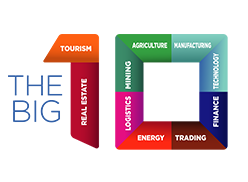In a world racing against climate change, the United Arab Emirates (UAE) has emerged as a global leader in sustainability and green innovation. Once known primarily for its oil wealth and towering skyscrapers, the UAE is now building a new legacy—one rooted in environmental stewardship, clean energy, and sustainable growth.
At the heart of this transformation lies the UAE Sustainability Vision 2030—a bold national strategy aimed at balancing economic progress with environmental protection. Here’s a closer look at how the UAE is leading the way in green development and reshaping its future.
The Foundation of Sustainability Vision 2030
The UAE’s Sustainability Vision 2030 is built around several core principles:
-
Diversifying the economy away from oil dependence
-
Investing in renewable energy and clean technologies
-
Enhancing resource efficiency across all sectors
-
Building sustainable, livable cities
-
Protecting biodiversity and natural ecosystems
This vision aligns with global frameworks such as the United Nations Sustainable Development Goals (SDGs) and the Paris Climate Agreement, showcasing the UAE’s commitment to being part of a global solution.
1. A Renewable Energy Revolution
One of the UAE’s most significant strides has been its investment in renewable energy. Ambitious projects like Masdar City and Mohammed bin Rashid Al Maktoum Solar Park are world-renowned examples.
Key Achievements:
-
Masdar City: A pioneering low-carbon urban development powered by renewable energy.
-
Mohammed bin Rashid Al Maktoum Solar Park: Targeting 5,000 MW of clean energy capacity by 2030, one of the largest solar parks in the world.
-
Barakah Nuclear Energy Plant: Supplying zero-carbon electricity to the grid.
The UAE also aims to have 50% of its energy mix come from clean sources by 2050, under its Energy Strategy 2050.
2. Building Sustainable Cities and Infrastructure
Urban sustainability is at the heart of the UAE’s vision. Initiatives focus on green building standards, public transportation, and energy-efficient infrastructure.
Highlights:
-
The Estidama Pearl Rating System ensures that new buildings meet strict sustainability criteria.
-
Dubai’s Green Mobility Strategy promotes electric vehicles and smart public transport systems.
-
Abu Dhabi’s Sustainable Communities Initiative designs neighborhoods with walkability, green spaces, and resource efficiency in mind.
The goal: Carbon-neutral, resilient cities where technology and nature coexist.
3. Tackling Climate Change and Carbon Management
In 2023, the UAE hosted COP28—the UN Climate Change Conference—marking a historic milestone in its climate leadership journey.
Climate Initiatives:
-
Net Zero 2050 Strategic Initiative: The first Middle Eastern country to commit to net-zero carbon emissions by 2050.
-
Launching carbon capture and storage (CCS) projects to mitigate industrial emissions.
-
Promoting nature-based solutions, like mangrove restoration, to enhance carbon sinks.
The UAE is also actively promoting climate finance and helping developing countries build climate resilience.
4. Protecting Natural Ecosystems
The UAE’s sustainability vision extends beyond cities to deserts, coastlines, and marine ecosystems.
Conservation Efforts:
-
Establishing protected areas like the Marawah Biosphere Reserve and Al Wathba Wetland Reserve.
-
Implementing sustainable fishing practices and marine biodiversity programs.
-
Planting 100 million mangroves by 2030 to combat coastal erosion and sequester carbon.
By protecting its fragile ecosystems, the UAE is securing its environmental heritage for future generations.
5. Greening the Oil and Gas Sector
Recognizing the ongoing role of hydrocarbons in the global economy, the UAE is pioneering sustainable practices in oil and gas:
-
Investing in carbon-neutral LNG production.
-
Deploying AI and IoT technologies to enhance energy efficiency and reduce emissions.
-
Supporting blue hydrogen development as a clean fuel alternative.
The aim is clear: Making fossil fuel production as clean as possible while advancing the transition to renewables.
6. Fostering Innovation and Green Entrepreneurship
The UAE is nurturing a new generation of green innovators through investments in clean tech startups, sustainability research, and incubators like Masdar Innovation Hub.
Programs like Climate Innovation Exchange (CLIX) encourage entrepreneurs worldwide to develop sustainable solutions for water scarcity, food security, energy efficiency, and biodiversity conservation.
Looking Ahead: A Blueprint for the Future
With its Sustainability Vision 2030, the UAE is not just transforming its own landscape; it’s setting a blueprint for how nations—especially resource-rich ones—can pivot toward a greener future.
By marrying tradition with technology, desert landscapes with solar cities, and oil wealth with environmental innovation, the UAE shows that economic prosperity and sustainability are not mutually exclusive—they are deeply interconnected.
Conclusion: Leadership Beyond Borders
The UAE’s journey toward sustainability is a testament to visionary leadership, strategic investment, and bold action. As the world grapples with the realities of climate change, the UAE stands as a beacon of possibility—proving that with the right commitment, it’s possible to build thriving societies that respect and protect the planet.
Sustainability isn’t just a goal for the UAE—it’s becoming a way of life.
Read more on The Big 10:
The Role of Foreign Direct Investment (FDI) in the UAE’s Growth and Diversification
How the UAE’s Free Zones are Attracting Global Entrepreneurs and Investors
How the UAE is Addressing Water Scarcity Challenges in Agriculture


